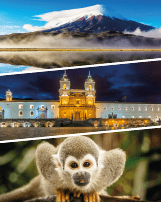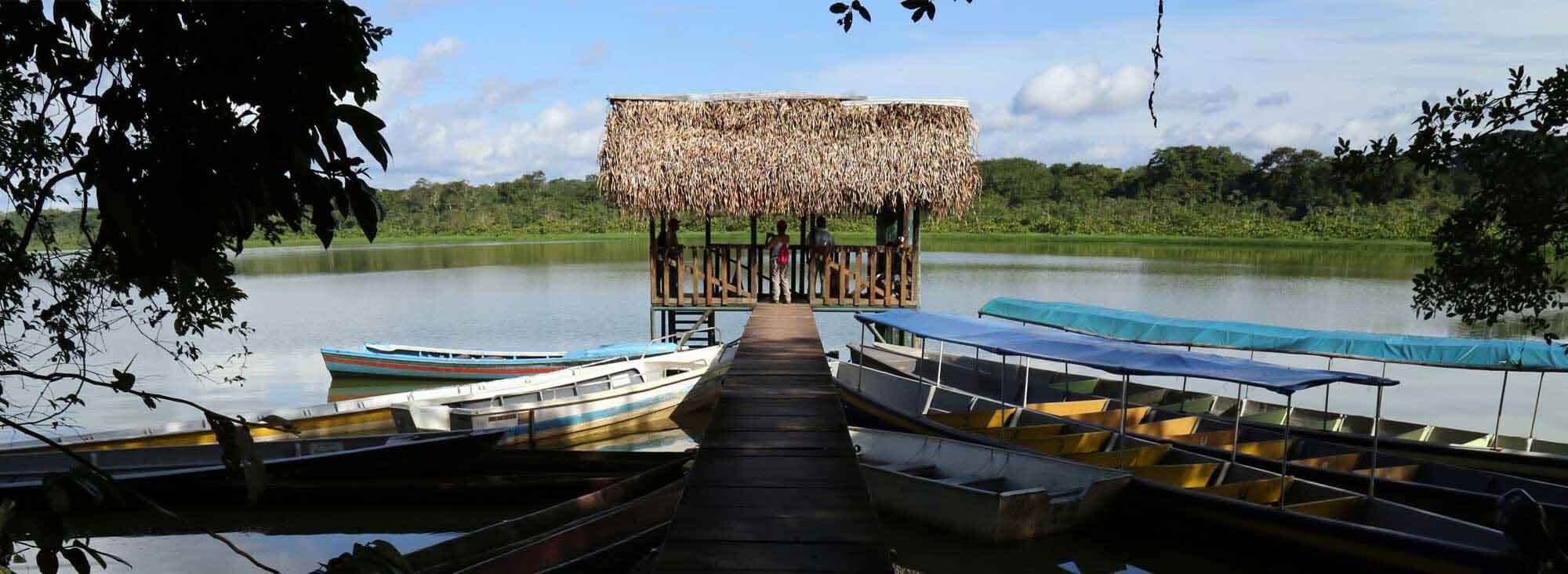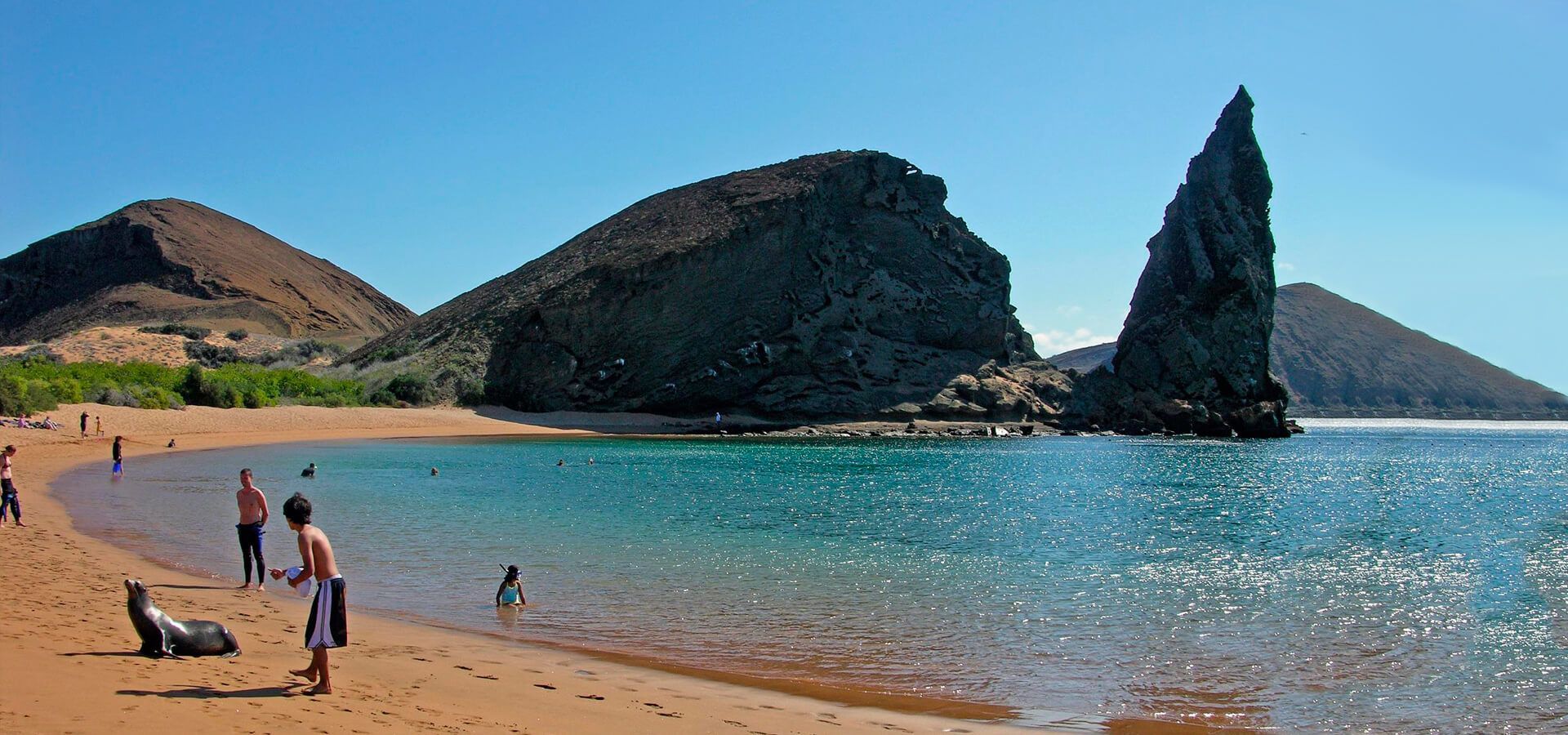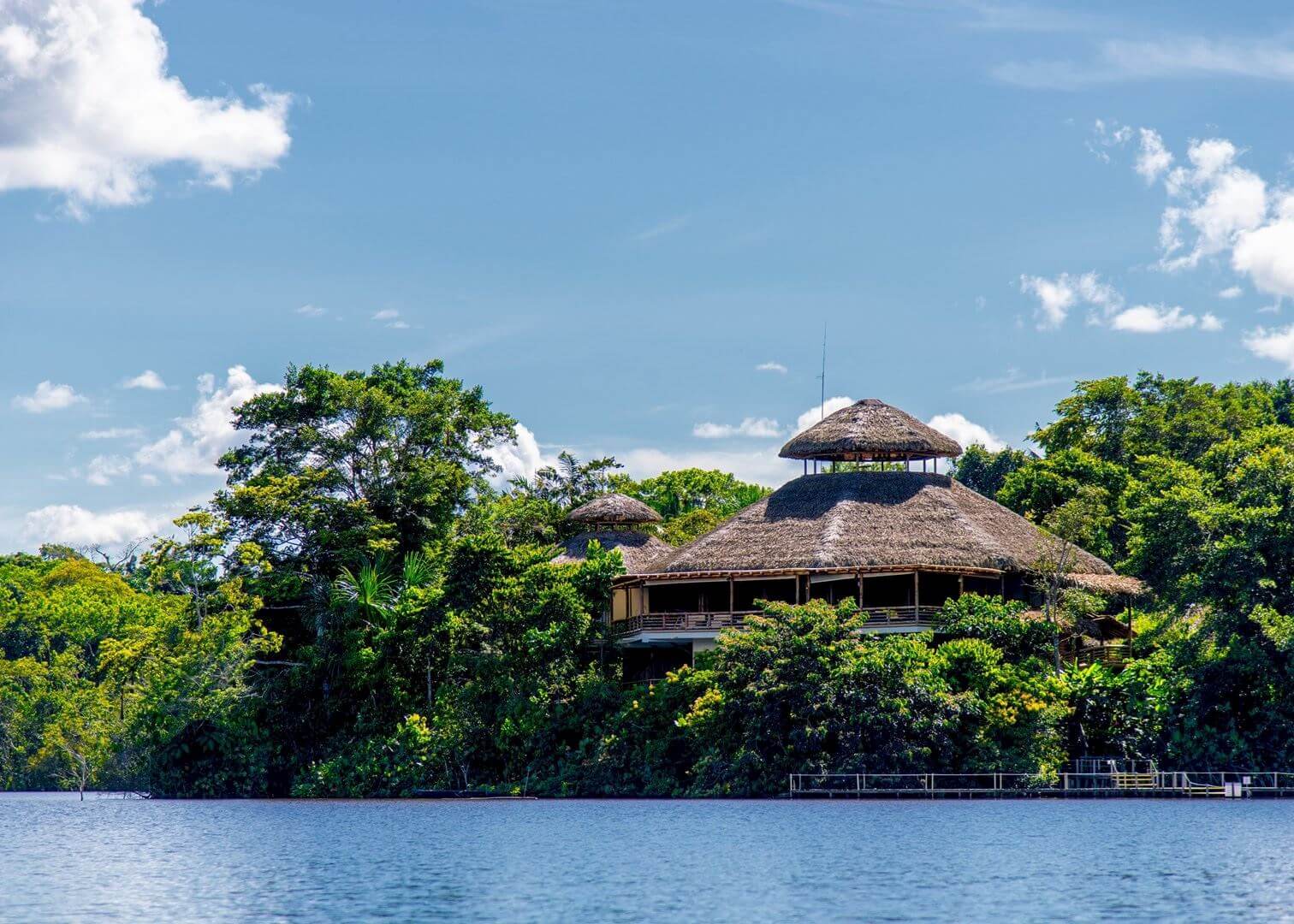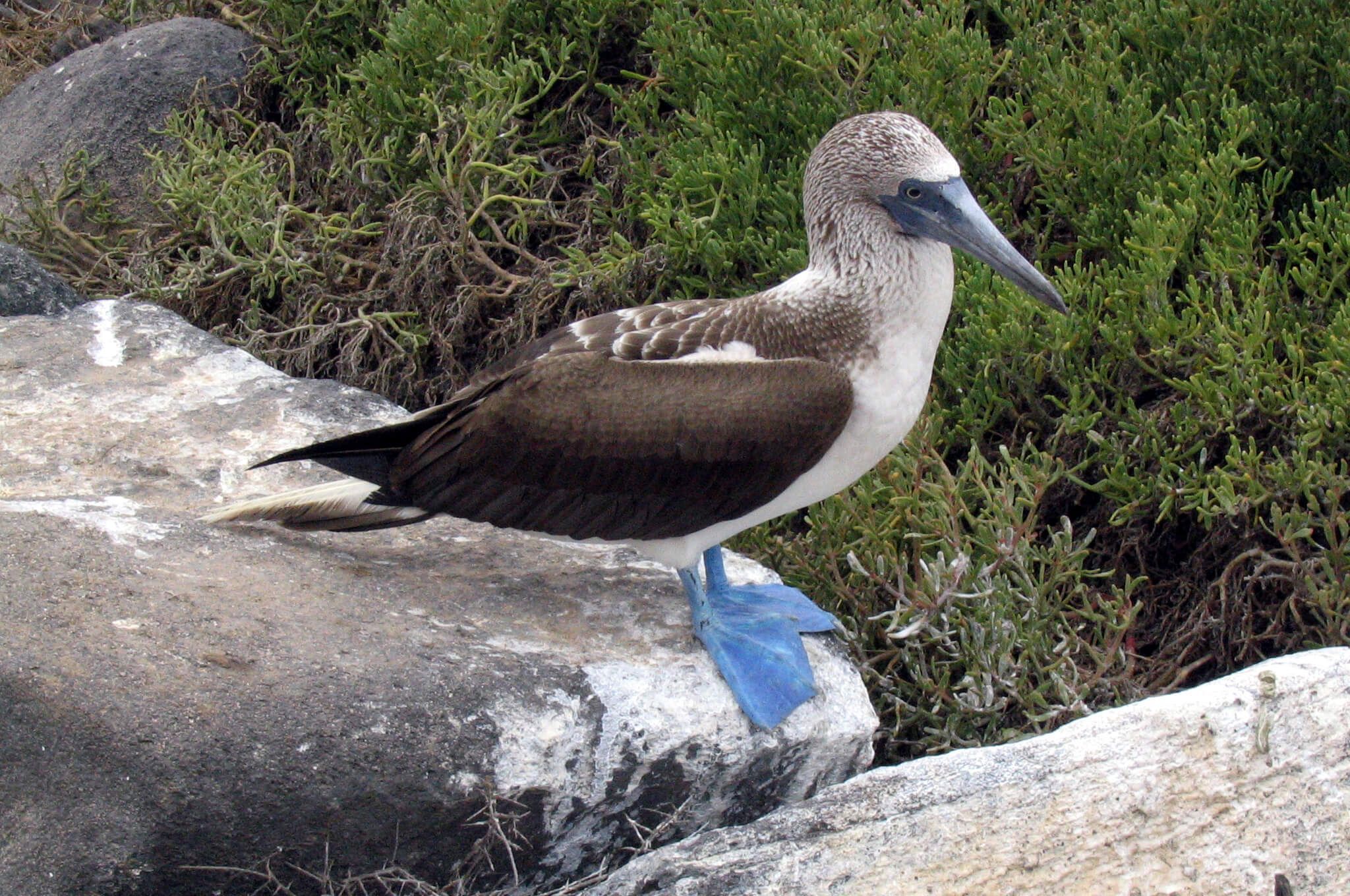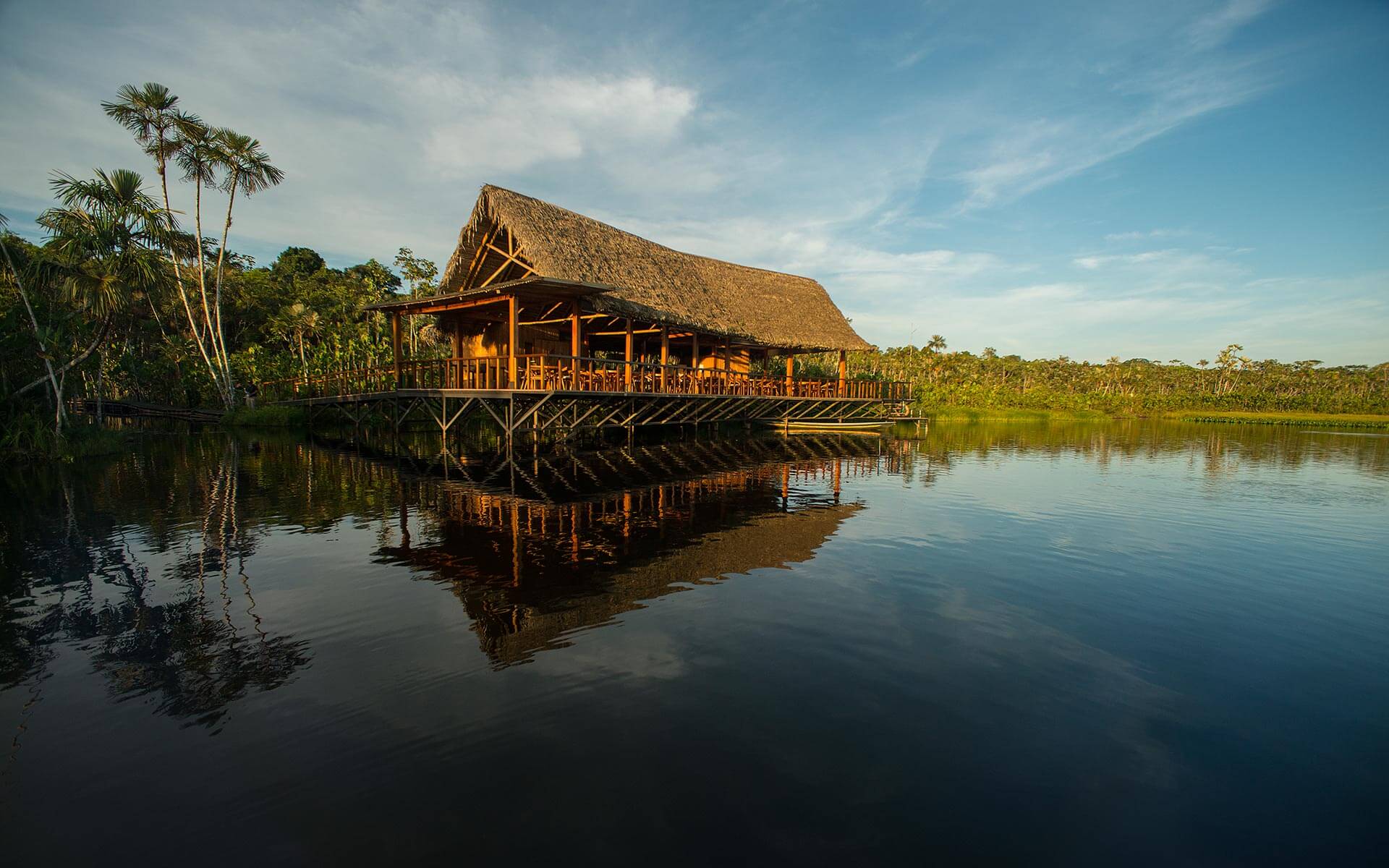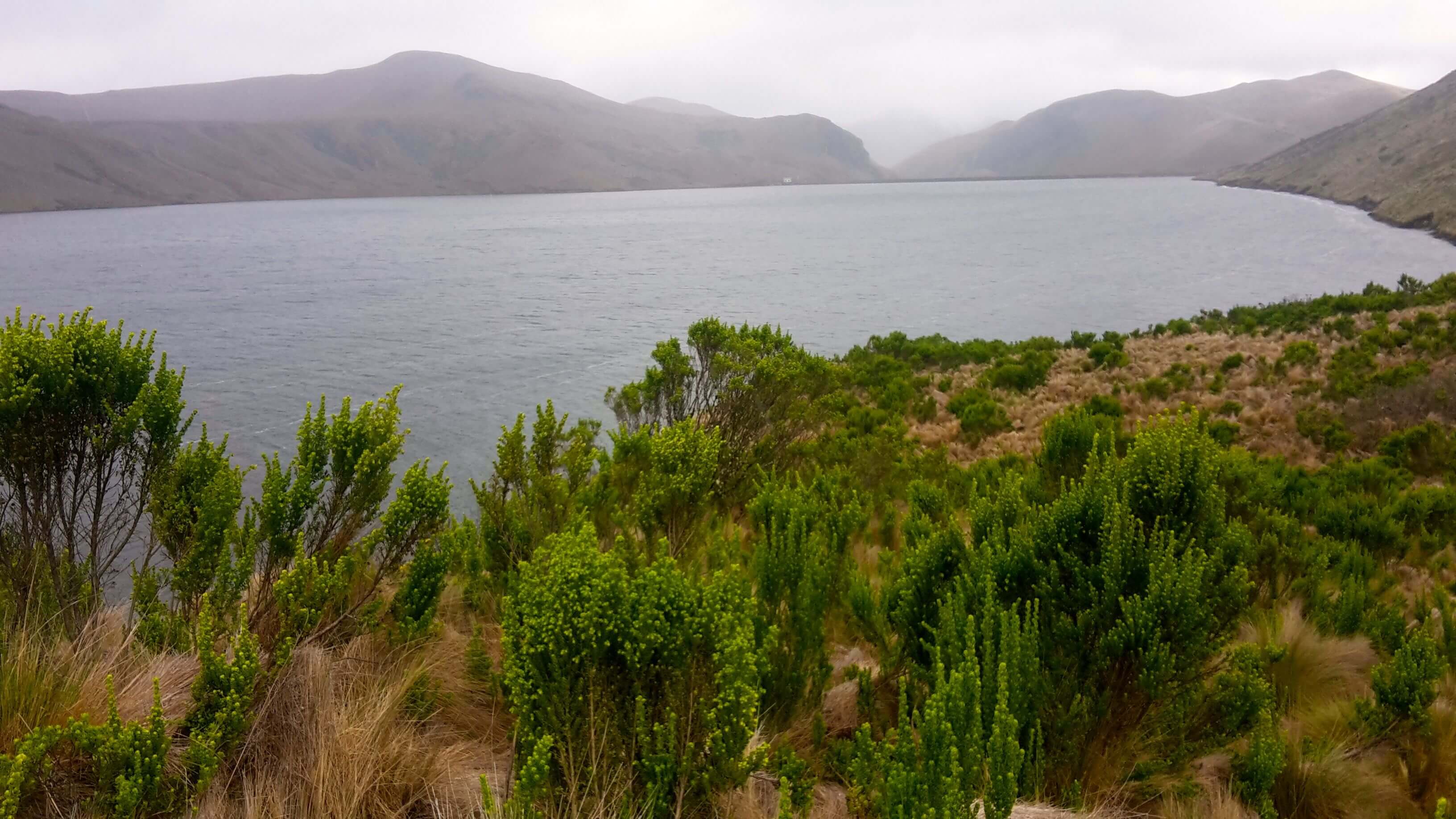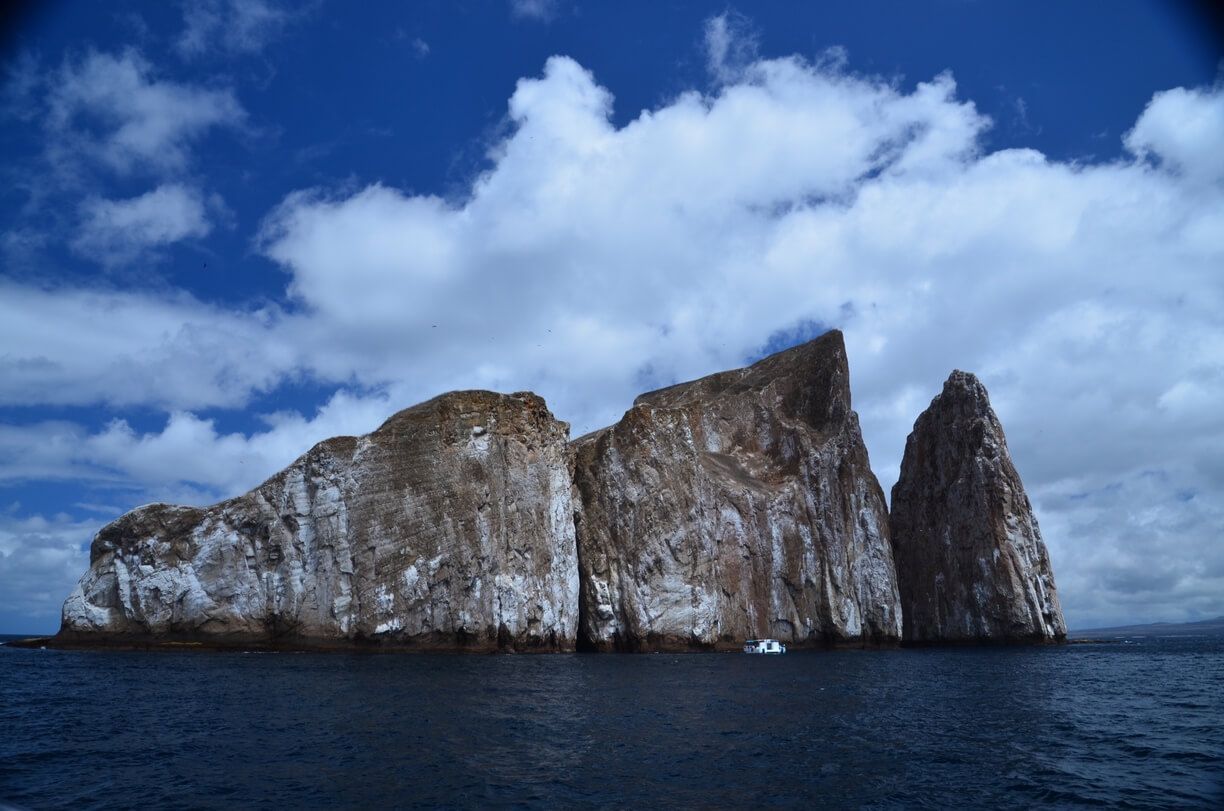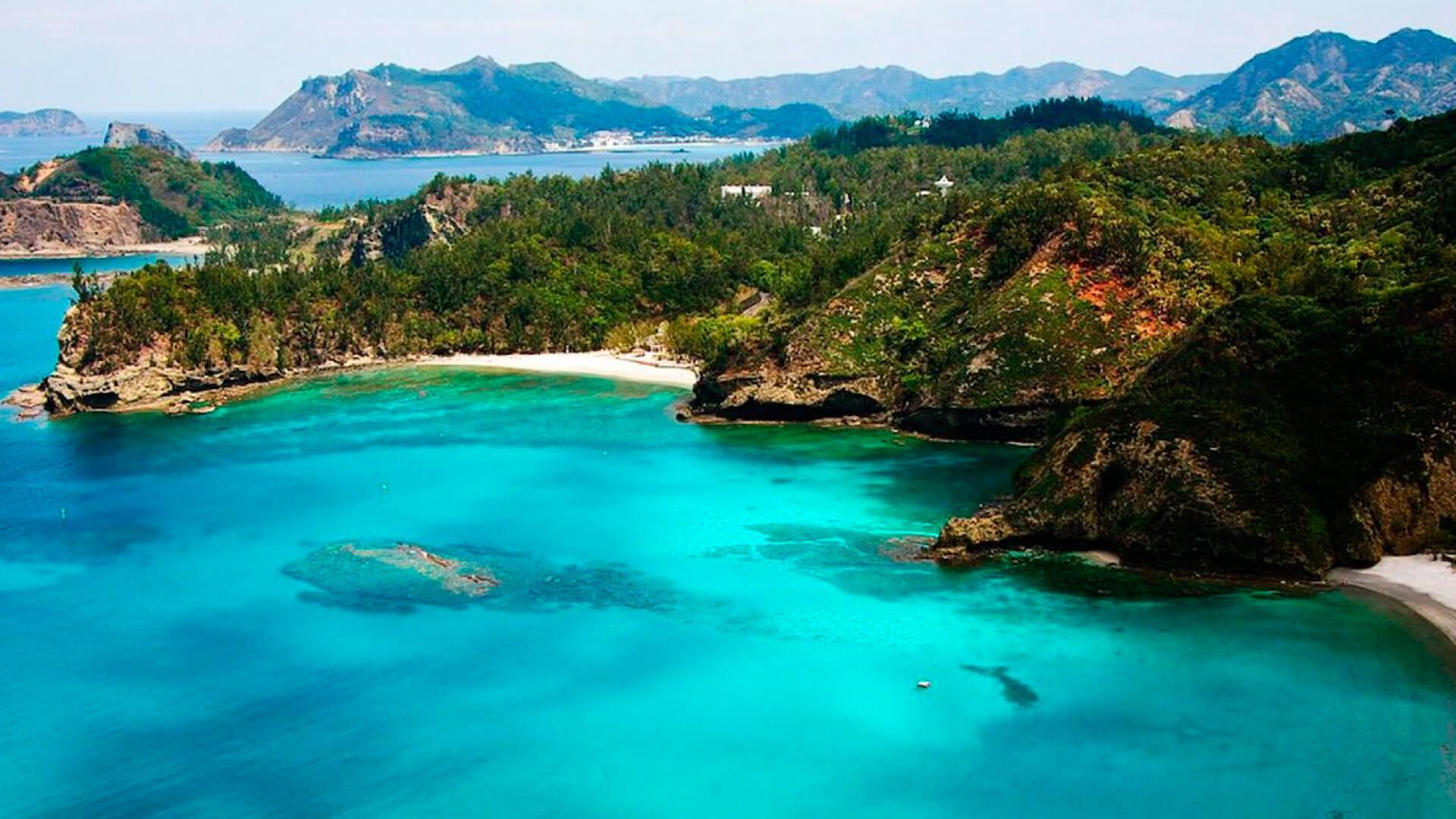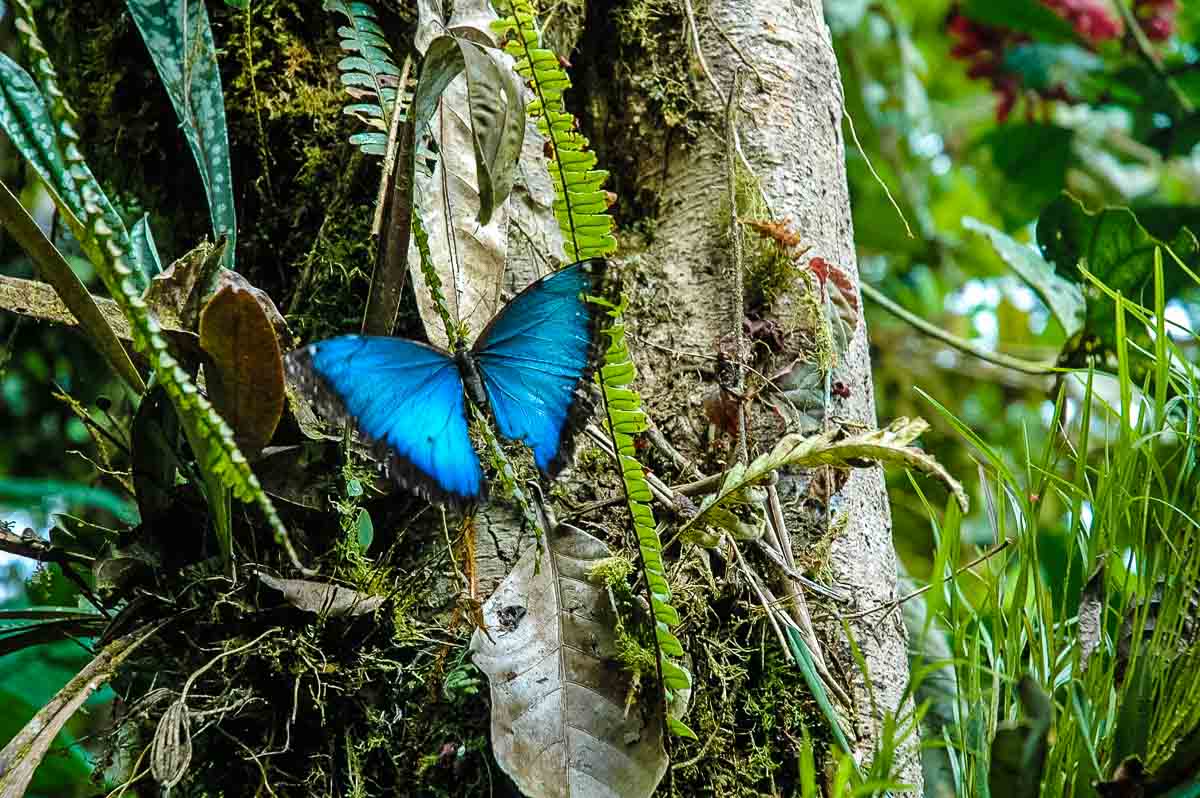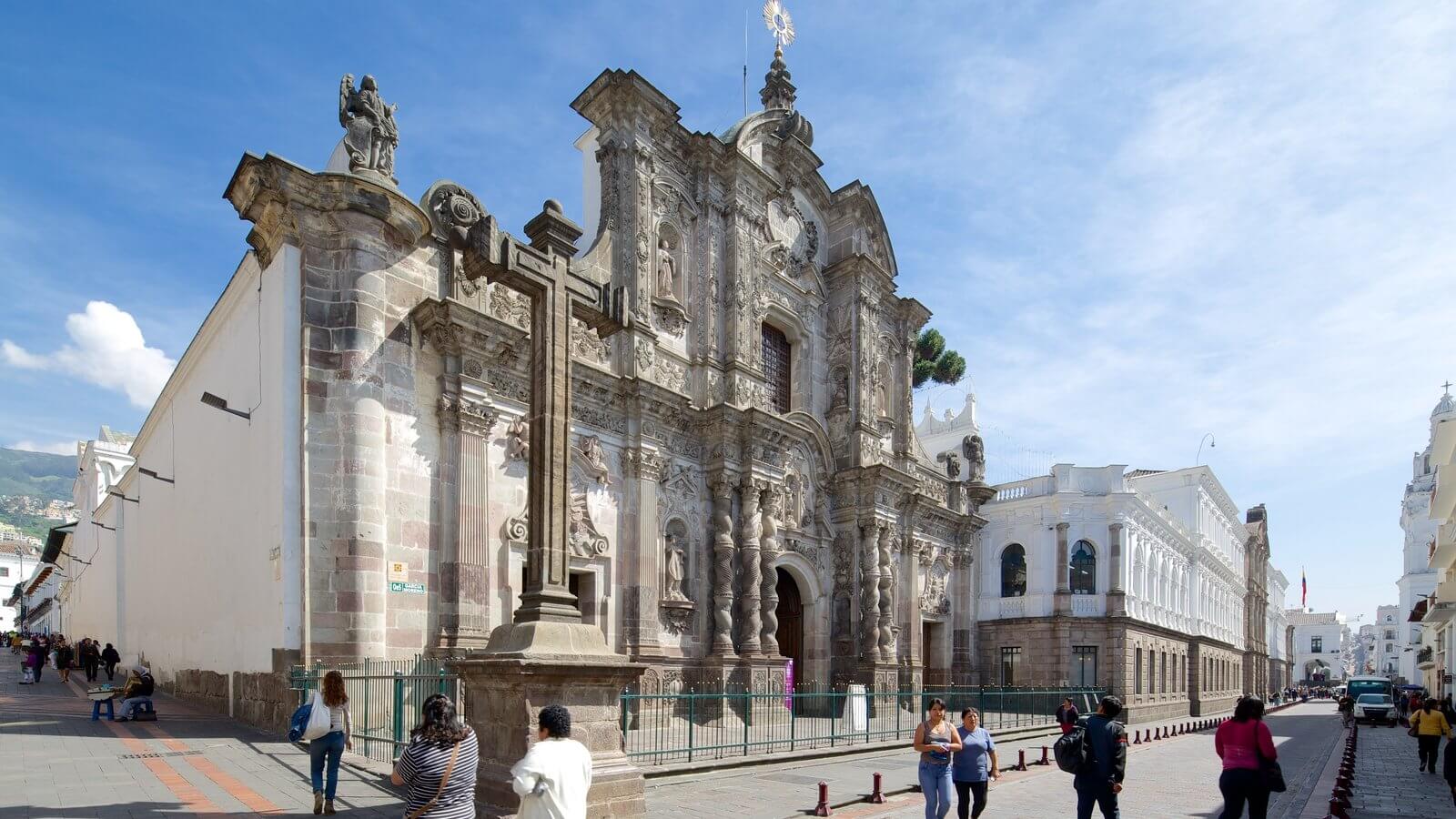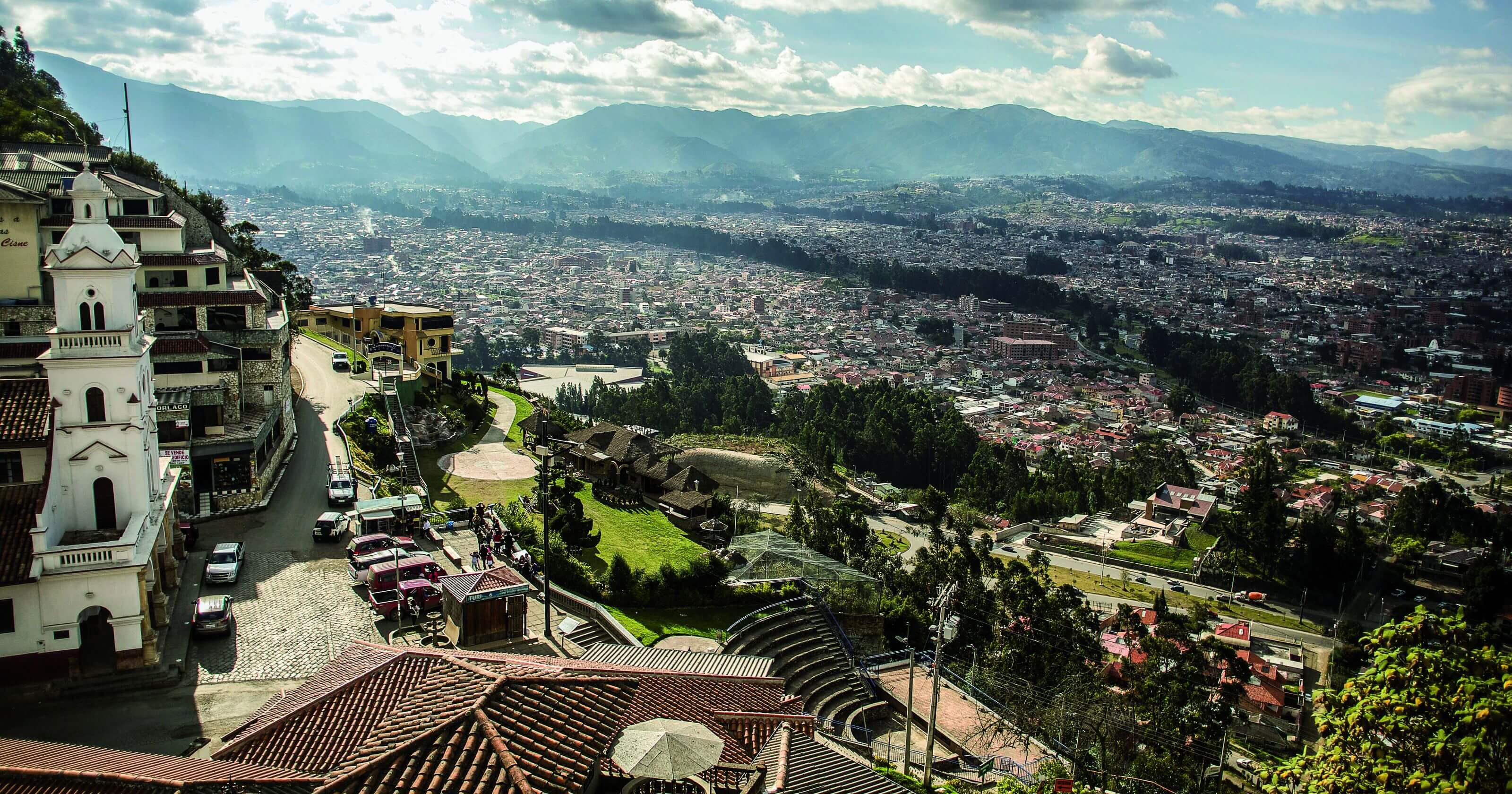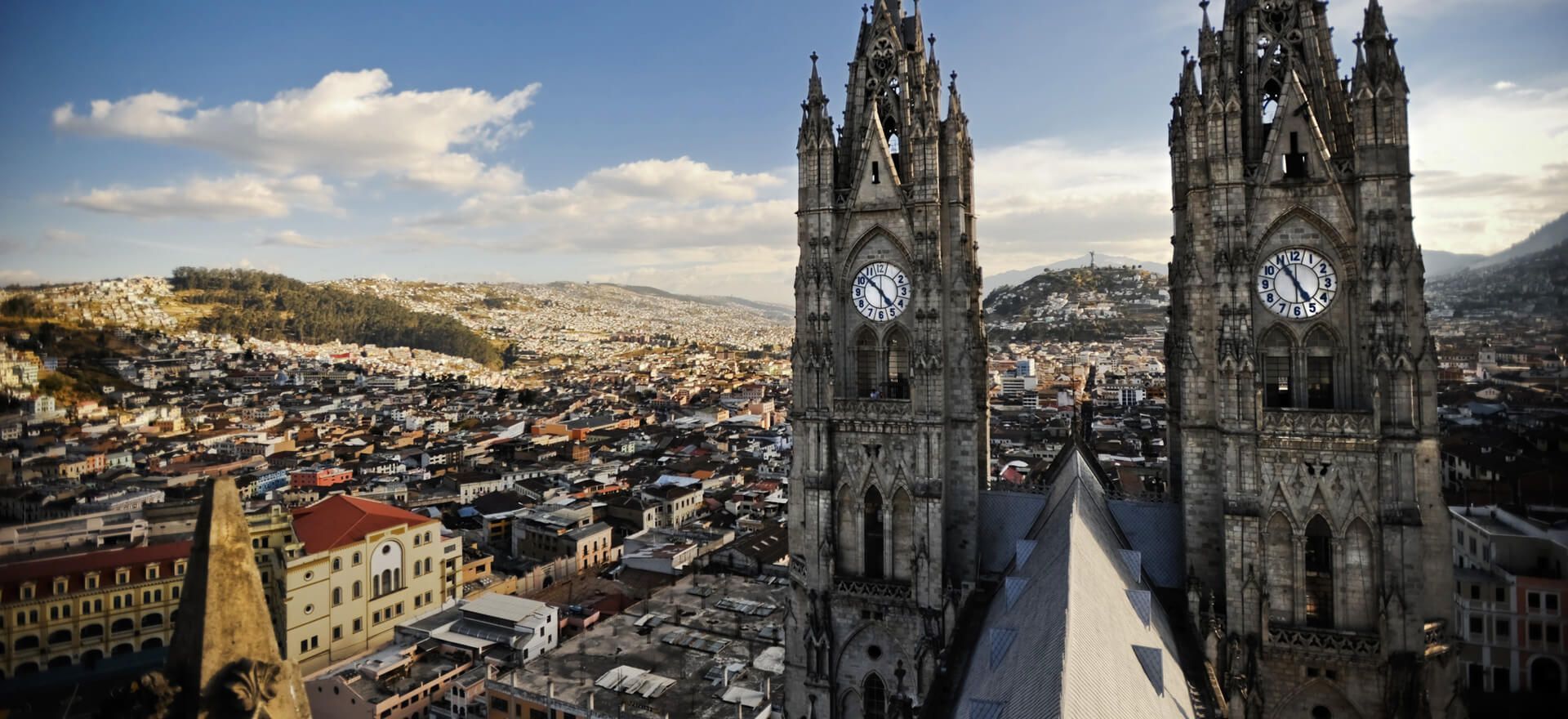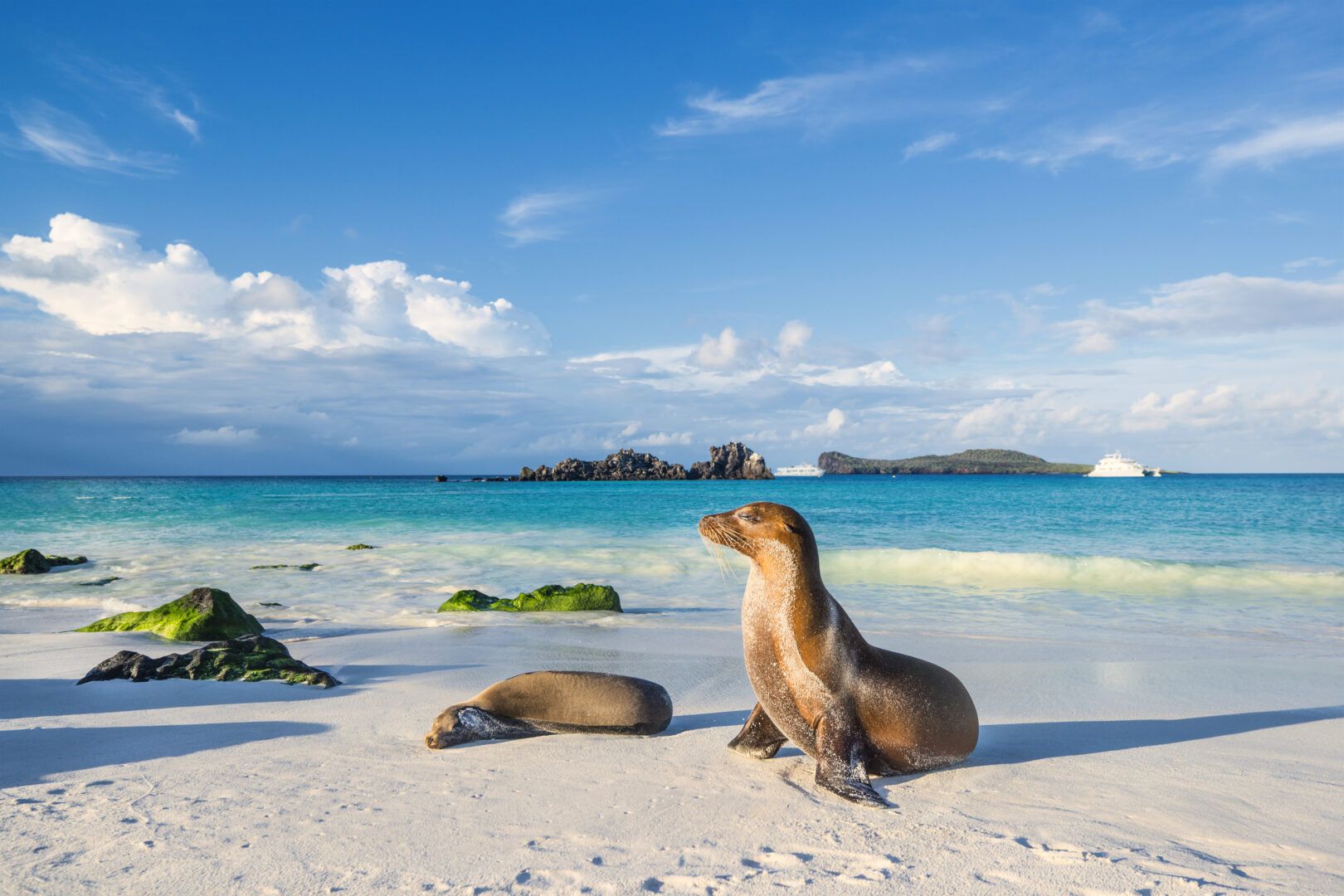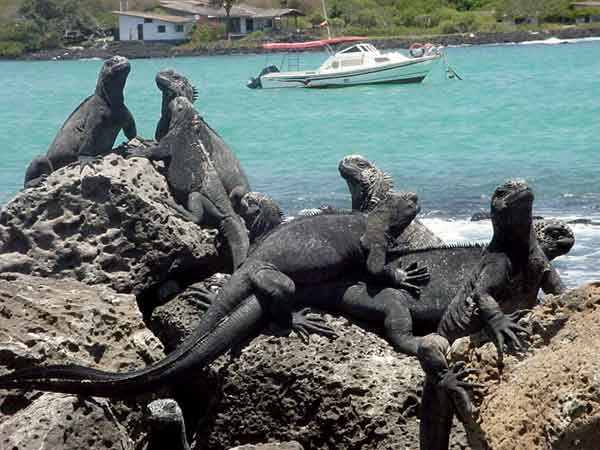Nature Tour – Galapagos – Island Hopping
Book nowOur Packages
ITINERARY
Arrival at Mariscal Sucre Airport, Quito. Transfer to Hilton Colon Hotel.
Accommodation: Mercure Hotel 4*
Check in – 14:00
Breakfast.
Quito city tour is perfect for seeing fascinating panoramas, churches, domes and roofs that have an important historical value. You will admire and learn about colonial art, architecture, culture, legends, and traditions. Quito, the capital of Ecuador, was founded in the 16th century on the ruins of an Inca city and stands at an altitude of 9.350 feet. Despite the 1917 earthquake, the city has the best-preserved, least altered historic Center in Latin America. The architecture and rich interiors, are pure examples of Quito School of sculpture, which is a fusion of Spanish, Italian, Moorish, Flemish and indigenous art. After four incredible hours exploring the Old Town, you’ll understand why Quito was the world’s first city named to UNESCO’s Cultural Heritage list.
At the afternoon, you will visit: “Cuidad Mitad Del Mundo” and Intiñan Museum
- “Ciudad Mitad del Mundo”
“Ciudad Mitad del Mundo” is the touristic, cultural, scientific and commercial smallest city of Ecuador. Its architecture is based on colonial style. An obelisk and a museum relevant to its geographical location were built at the Middle of the World site. All of this is found among the drastic landscape surrounded by nature and modern buildings. The monument is crowned by a metallic sphere that represents the Earth. It is named Equatorial Monument and it geographical orientation coincides with the four cardinal points and is located precisely at Earth’s midpoint — 0 degrees latitude, 0 minutes, 0 seconds.
- Intiñan Museum
Since the year 1960, the Intiñan Museum in Quito has been a center for the promotion of the many aspects of Ecuador’s culture. This museum offers interactive exhibits on how the Incas determined the middle of the earth, plus interesting science experiments such as balancing an egg on a nail.
Return to the hotel.
Accommodation: Mercure Hotel 4*
(Breakfast)
Breakfast.
After breakfast we will drive to the famous Quilotoa Crater Lake from Quito through the Panamericana “The Avenue of the Volcanoes”.
Before going to Quilotoa, we will visit a beautiful rose farm, to learn everything about the process of growing, harvesting and exporting roses.
On our way we will pass by the Tigua workshop and admire some impressive local artwork with impressions of life in the Andes.
At our arrival to the Quilotoa Loop, we will appreciate an emerald green lake inside the crater of an extinct volcano with steep jagged cliffs. We are going to trek into the crater to the lake shore and the return to the top of the crater is a mule ride. Kayak on the lake (optional).
Accommodation: Sangay 4*
(Breakfast)
Breakfast.
Baños is known as “The Gate of the Amazon Region.” Baños are located on the outside of the eastern range of the Andes. It is the perfect place to relax and explore. This small town is famous worldwide for its natural crystalline waterfalls.
Here you can see how it is made the famous “marshmallow” (candy, which is made from sugar cane).
Baños is the main tourist attraction for adventure, there are several ways to enjoy nature through hiking, horseback riding, cycling and rafting.
We will start the city tour and the visit the waterfalls: “Agoyán”, “Manto de la Novia” and “Pailón Del Diablo” and enjoy the “Swing at the End of the World”.
Continue to Riobamba.
Accommodation: Hacienda Abraspungo 4 *
(Breakfast)
Visit to the Chimborazo Reserve and the ruins of Ingapirca.
The duration of the excursion day, with transfers, is 10-12 hours.
The duration of the transfer Riobamba-Chimborazo – 1 hour; Chimborazo-Ingapirca 4 hours; Ingapirca-Cuenca – 1.5 hours.
The height of the excursion is 3200-4800m. Overnight altitude – 2500m.
The average temperature during the tour is 0-+5C. Average overnight temperature – +15С
Located in the heart of Ecuador, this relatively small reserve preserves historical, cultural and biological riches, although the cold prevailing in it suggests otherwise. From the impressive view of the “grandfather” Chimborazo, more than six thousand meters high, is breathtaking when you look at him, no matter from what point: from the city of Riobamba, from the train car heading to Alausi, from the Ambato-Guaranda highway in the Cruz del area – Arenal or from a plane flying over the Andes. No wonder, when flying in the vicinity of the majestic volcano, pilots always announce this to their passengers. The Chimborazo Reserve was established in 1987 with the aim of implementing a program to manage the “Andean camels” (llamas, alpacas and vicuñas). These close relatives of famous camels are native to the riding paramo but disappeared from the wild many years ago. The creation of this reserve was intended to repopulate these areas with native species, in this case, they brought vicuñas from Peru and Chile, where they still live in natural conditions. Thus, the reserve has formed and manages wild populations, from which it will receive valuable wool in the future.
The reserve, despite the fact that its importance is obvious, no doubt attracts the attention of tourists thanks to the aforementioned volcano Chimborazo – the highest mountain of Ecuador, covered with eternal glaciers – and its neighbor, the Cariuairaso volcano. Both volcanoes are located in the center of the reserve. Numerous streams, formed during the melting of volcanic glaciers, flow into the Ambato, Chambo and Chimbo rivers, which in turn form the Pastasu River. Lunch Box included.
After visiting the reserve, we go to the ruins of Ingapirca. Ingapirca is the largest and best preserved archaeological site in Ecuador, is located 80 km from the city of Cuenca, in Cañar province. It was built with millions of hewn stone in the middle of the eighteenth century. In the complex you can see the different architectural units, among which stands the Temple of the Sun, which have an elliptical shape 37 feet long and 12 meters wide, was used to perform ceremonies and rituals Cañari-Inca culture. In addition, you can observed the oldest building Ingapirca Pilaloma which consists of a series of rectangular rooms.
After visiting the ruins we will go to Cuenca, here you can rest and enjoy your free time.
Accommodation: Hotel Santa Lucia 4+*
Breakfast/Box Lunch
Breakfast.
Cuenca, 2560 m. high (8400 feet), the third largest city in Ecuador and a UNESCO World Heritage Site, is situated in a fertile valley in the southern highlands of Ecuador. Cuenca has kept its old-world architectural charm and its colonial ambience. The Old Town is best visited on foot. Our tour takes you along the cobblestone streets admiring the historic buildings, hanging balconies, carved wooden doors, the craft fair and colorful flower market, the main plaza with the Old Cathedral, which has been converted to the “Museum for Religious Art”, and the magnificent blue-domed Cathedral of the Immaculate Conception. See silversmiths at work and handicrafts of almost every kind. You end the tour with a visit to the “Panama Hat” factory.
Accommodation: Santa Lucia Hotel 4*
(Breakfast)
Breakfast.
In the morning we will visit Mirador de Turi, is one of the most popular excursions in Cuenca. Turi is located in the perfect place to bask in the breathtaking panorama of the entire city of Cuenca. Then we will continue to visit the Panama Hat Factory. The factory has become a popular place to visit) because the museum provides daily tours to the public on the past and current ways of producing the different kinds of panama hats.
After lunch we will continue to the Saraguro Community. The Saraguro people are very welcoming and willing to show us part of their daily life, turning this trip into one of the best experiences of rural, agro and community tourism. They are very proud of their indigenous roots so they wear their typical customs and practice ancestral rituals.
We will continue to Loja.
Accommodation: Grand Victoria 4*
(Breakfast, Lunch)
Breakfast.
After breakfast we will visit Loja. Including the “gates of the city” The gates of the city are modeled after the Coat of Arms of the city, presented by King Felipe II of Spain in 1571. The gate is on Av. Gran Colombia, and houses four galleries which show contemporary Lojano artwork, and a cafeteria and gift shop. A stunning view of the city is found by climbing the clock tower. Loja contains a number of historic churches; the city’s board of tourism has approached finding them in a novel manner. Beginning at the Puerta de la Ciudad, one of the first thing a tourist will notice is a large orange stripe painted on the sidewalk. Following the stripe takes the interested tour of the main historic churches and areas of Loja.
Also we will visit the Jipiro Park. It covers an area of 10 hectares, and features some architectural replicas of famous buildings from around the world. Among its main attractions are the Cathedral of San Basilio Moscu – Russia, a Chinese Pagoda, an Indian temple, the Colonial Bridge, an Arab Mosque, the Euro-Latino Castle, the Sun Door, and more.
After visit Loja, we will continue to the Podocarpus National Park, is a park located in the provinces of Zamora Chinchipe and Loja, in the south-east of Ecuador. It was created in 1982. In the park you can find a great variety of landscape and habitat leads to high biodiversity of flora and fauna. The native vegetation of this area, lush and varied, so the National Park is considered Poducarpus Botanical Garden of America.
We will continue to Vilcabamba, called the Valley of Longevity. Vilcabamba was little known by outsiders until scientists discovered that a strikingly large percentage of residents were over a hundred years old.
Accommodation: Paraiso Vilcabamba 3*
(Breakfast, Box Lunch)
Breakfast.
In the morning we will visit the Jocotoco Foundation; established in 1998 to protect land of critical importance to the conservation of Ecuador’s endangered birds and associated biodiversity not otherwise protected by Ecuador’s existing system of protected areas. The Foundation primarily achieves this aim by purchasing lands and managing them as ecological reserves.
The Lodge is settled in the lower portion of Buenaventura Reserve, at 500 m elevation. This reserve is home of a remarkable set of flora and fauna, including almost 300 bird species, many of them being endemics. Special climate conditions have resulted in a wide variety of habitats used by birds.
You will have the opportunity to stroll through the forest, accompanied by a guide who will tell you all the secrets of the reserve. Walking through the forest takes from 1.5 to 4 hours, depending on the chosen trail.
Accommodation: Umbrellabird Lodge 4*
(Breakfast,BoxLunch,Dinner)
Breakfast.
After breakfast we will visit Puyango. The Puyango Petrified Forest, or the El Bosque Petrificado de Puyango, is a very unusual reserve. It is home to the largest known area of exposed petrified wood, of which a lot comes from the Araucarias family – a tree that is not often fossilized. Forests like this are not easy to come by, as trees that are dying will normally just decompose. However, here we have an excellent example of fossilized trees and marine fossils due to the dry nature of the ecosystem. The marine fossils that you will find in the forest occur because of the area having once been completely under water. The area is estimated to be about 500 million years old. Apart from the intriguing tree fossils you can also see a wonderful array of wildlife. There are more than 130 different types of bird species to be found here throughout the year, with equally beautiful butterfly species.
We will continue to Guayaquil. On the way, we will visit a banana plantations (optional).
Accommodation: Wyndham Guayaquil 4*
(Breakfast)
Transfer to the airport for your flight to the Galapagos Islands.
Breakfast: at hotel
When you land in Baltra a guide will be waiting for you. You will arrive at Santa Cruz Island crossing the Itabaca Channel, it is a waterway that connects two islands,(Baltra and Santa Cruz), in 10 minutes.
Then we continue to Highlands of Santa Cruz. Here you may observe the famous Giant Tortoises in their natural environment, which also known as Galapagos, and from where the name of the Islands derive. Also catch sight of the famous Galapagos Finches, Bird Wizards, as well as endemic vegetation such as Escelacias forests and Matazarnos.
Later you will have free time to explore the town of Puerto Ayora, where you can several souvenir shops.
Accommodation: Villa Laguna 3+* Deluxe Room
(Breakfast, Lunch)
Breakfast.
From the second-day the excursion may change depending on the availability. Visits to the islands are confirmed one week before arrival. Visits could be to the following islands (one island per day):
North Seymour Island:
North Seymour is a small island near to Baltra Island in the Galapagos Islands. It was formed by uplift of a submarine lava formation. The whole island is covered with low, bushy vegetation. This island is home to a large population of blue-footed boobies and swallow-tailed gulls. It hosts one of the largest populations of frigate birds in Galapagos.
North Seymour has a visitor trail approximately 2 kilometers (1.2 mi) in length crossing the inland of the island and exploring the rocky coast. North Seymour is an extraordinary place for breeding birds, and is home to one of the largest populations of nesting blue-footed boobies and magnificent frigate birds. Pairs of blue-footed boobies can be seen conducting their mating ritual as they offer each other gifts, whistle and honk, stretch their necks towards the sky, spread their wings, and dance—showing off their bright blue feet.
Plazas Island:
South Plaza is a small island off the east coast of Santa Cruz in the Galapagos Islands. It has an area of 0.13 km and a maximum altitude of 23 metres. South Plaza was formed by lava up streaming from the bottom of the ocean. Despite its small size it is home to a large number of species and it is famous for its extraordinary flora. That is why this island is very popular with visitors. On the steep banks it is possible to see a great number of birds such as nesting Red-billed Tropicbirds and Swallow-tailed Gulls, but most of all, enjoying the beautiful view from atop the steep banks or strolling along the base of the cliff is an extremely pleasurable experience. Very attractive are the beautiful prickly pear cactus trees (Opuntia echios) and of course the large colony of Galapagos Land Iguanas. Depending on the season, the Sesuvium ground vegetation changes its colour from intense green in the rainy season to orange and purple in the dry season.
Bartolome Island:
Bartolome Island is a volcanic islet in the Galápagos Islands group. It is a volcanic islet just off the east coast of Santiago Island. It is one of the “younger” islands in the Galápagos archipelago. With a total land area of just 1.2 km², this island offers some of the most beautiful landscapes in the archipelago. The island consists of an extinct volcano and a variety of red, orange, green, and glistening black volcanic formations.
Bartolome has a volcanic cone that is easy to climb and provides great views of the other islands. Bartolome is famous for its Pinnacle Rock, which is the distinctive characteristic of this island, and the most representative landmark of the Galápagos.
It has two visitor sites. At the first one, you may swim and snorkel around Pinnacle Rock; the underwater world there is really impressive. You can snorkel with the penguins, marine turtles, white-tipped reef sharks, and other tropical fish.
Accommodation: Villa Laguna 3+* Deluxe Room
(Breakfast, Lunch)
Breakfast.
Transfer to the airport for your flight to Quito or Guayaquil.
(Breakfast)
INCLUDES:
- Private transportation and tours with English Speaking Guide in Mainland Ecuador as described on the itinerary;
- Shared transportation and tours with English speaking guide in the Galapagos Islands as described on the itinerary;
- Accommodation as listed on the itinerary;
- Meals as listed on the itinerary;
- Entrance fees as listed on the itinerary.
NOT INCLUDED:
- Flight to/from Galapagos Islands;
- Galapagos National Park Entrance Fee / USD 100 pp (subject to change);
- Ingala Transit Control Card / USD 20 pp (subject to change);
- International flights;
- Travel Insurance (opti0nal)
- Health insurance (obligatory);
- Tips;
- Personal expenses;
- Items not specified.
|
RATES IN US $ PER PERSON |
|
||
|
1-3 pax |
SNGL |
DBL |
TRPL |
|
Mainland Ecuador & Galapagos Islands |
5068 |
3162 |
3000 |
- Cost of SNGL – if there is 1 person traveling.
- Supplement for single accommodation (from 2 people) – USD 615.
NOTE: RATES AND ITINERARY subject to change without prior notice

 Русский
Русский